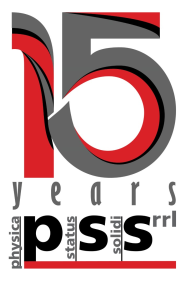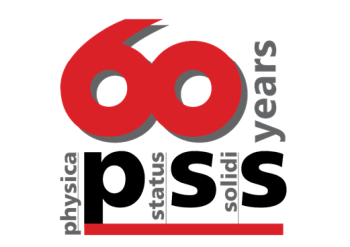Overview
Aims and Scope
The physica status solidi (pss) journal group is devoted to the thorough peer review and the rapid publication of new and important results in all fields of solid state and materials physics, from basic science to applications and devices. Among the largest and most established international publications, the pss journals publish reviews, letters and original articles, as regular content as well as in special issues and topical sections.
physica status solidi (b) – basic solid state physics covers theoretical and experimental investigations of the structural, electronic, optical, magnetic, and thermodynamic properties of solid materials based on quantum solid state physics. Current topics include nanotubes and graphene, 2-d layered materials, strongly correlated systems, superconductivity, multiferroics, topological insulators, and semiconductors for device technology. Methods range from analytic modeling and computational approaches via growth and preparation to characterization with microscopy, diffraction, spectroscopy, magnetization, dielectric and electrical characterization and beyond.
physica status solidi (b) – basic solid state physics is a sister journal of the pss flagship physica status solidi (RRL) – Rapid Research Letters, which employs priority editorial handling to offer cutting-edge research publication at record speed, and of physica status solidi (a) – applications and materials science.
physica status solidi (b) is a subscription-based journal offering a hybrid open access option. Authors may publish with Wiley-VCH copyright transfer agreement at no direct cost to the author, or select a CC-BY open access license after acceptance. Wiley has many agreements in place with institutions and funders that may be able to help with Article Publication Charges.
ISSN: 0370-1972 (print). 1521-3951 (online). CODEN: PSSBBD.
Currently 12 issues per year.
How to cite: To make sure that references to this journal are correctly recorded and resolved (for example in CrossRef, PubMed, or Web of Science), please use the following abbreviated title in any citations: "Phys. Status Solidi B" (punctuation may vary according to the style of the citing journal).
Readership
physicists, materials scientists, crystallographers, chemists, and device engineers dealing with solid-state physics or materials science in basic or applied research and teaching
Keywords
solid-state physics, interfaces, low-dimensional materials, quantum dots, nanotubes, doping, defects, structure, morphology, charge transport, lattice, dynamic, electronic, thermodynamic, magnetic, dielectric, ferroelectric, and optical properties, band structure, molecular dynamics, density functional theory, ab initio methods, epitaxy and growth, imaging, diffraction and spectroscopy, oxides, semiconductors, superconductors, graphene, topological insulators, auxetics, multiferroics, perovskites, kesterites, manganites, transparent conducting oxides, high-k dielectrics, organic semiconductors, quantum scale transport, spin physics, strongly correlated systems
Abstracting and Indexing Information
- Chemical Abstracts Service/SciFinder (ACS)
- Current Contents: Physical, Chemical & Earth Sciences (Clarivate Analytics)
- INIS: International Nuclear Information System Database (IAEA)
- INSPEC (IET)
- Journal Citation Reports/Science Edition (Clarivate Analytics)
- Physics Abstracts (IET)
- Science Citation Index (Clarivate Analytics)
- SCOPUS (Elsevier)
- VINITI (All-Russian Institute of Science & Technological Information)
- Web of Science (Clarivate Analytics)






